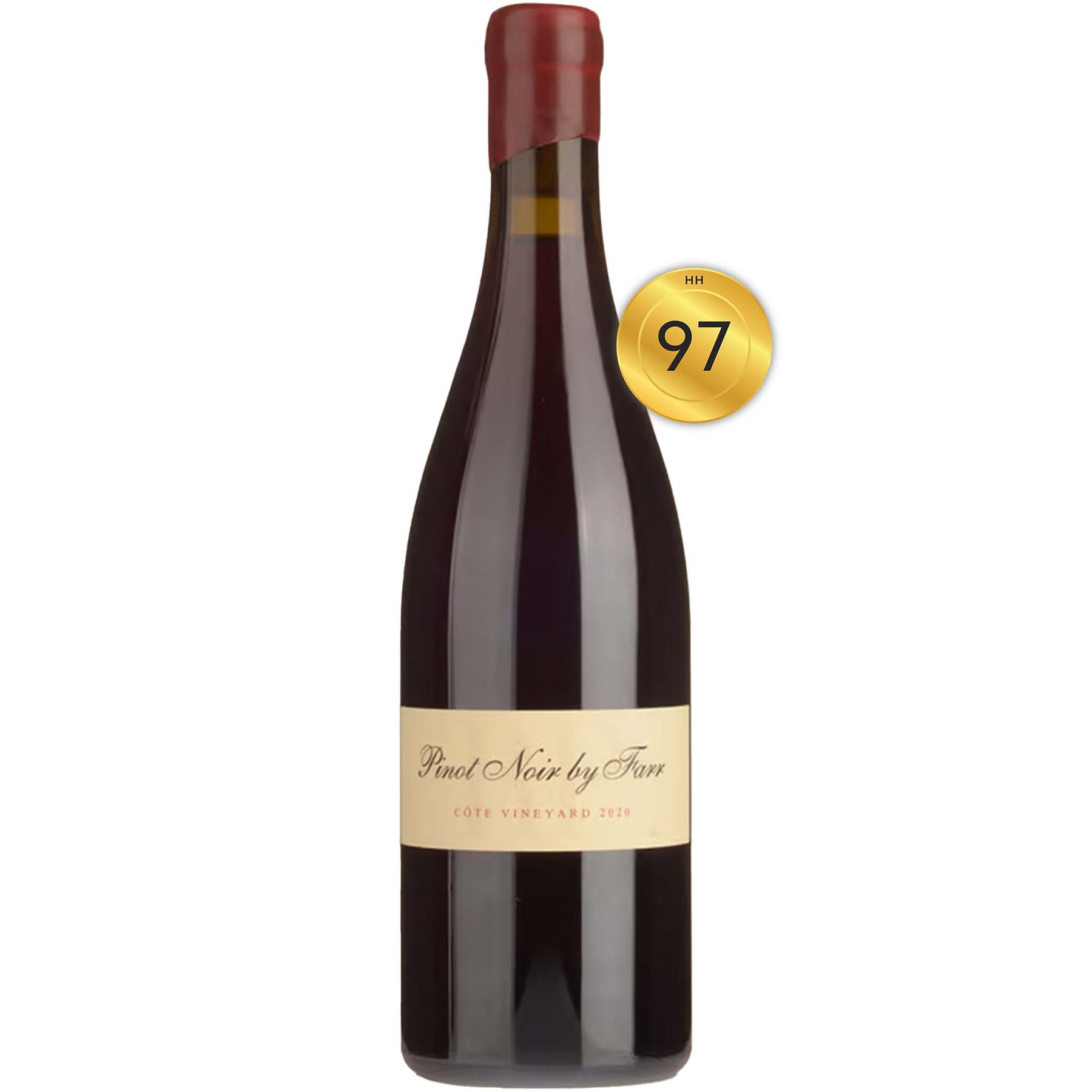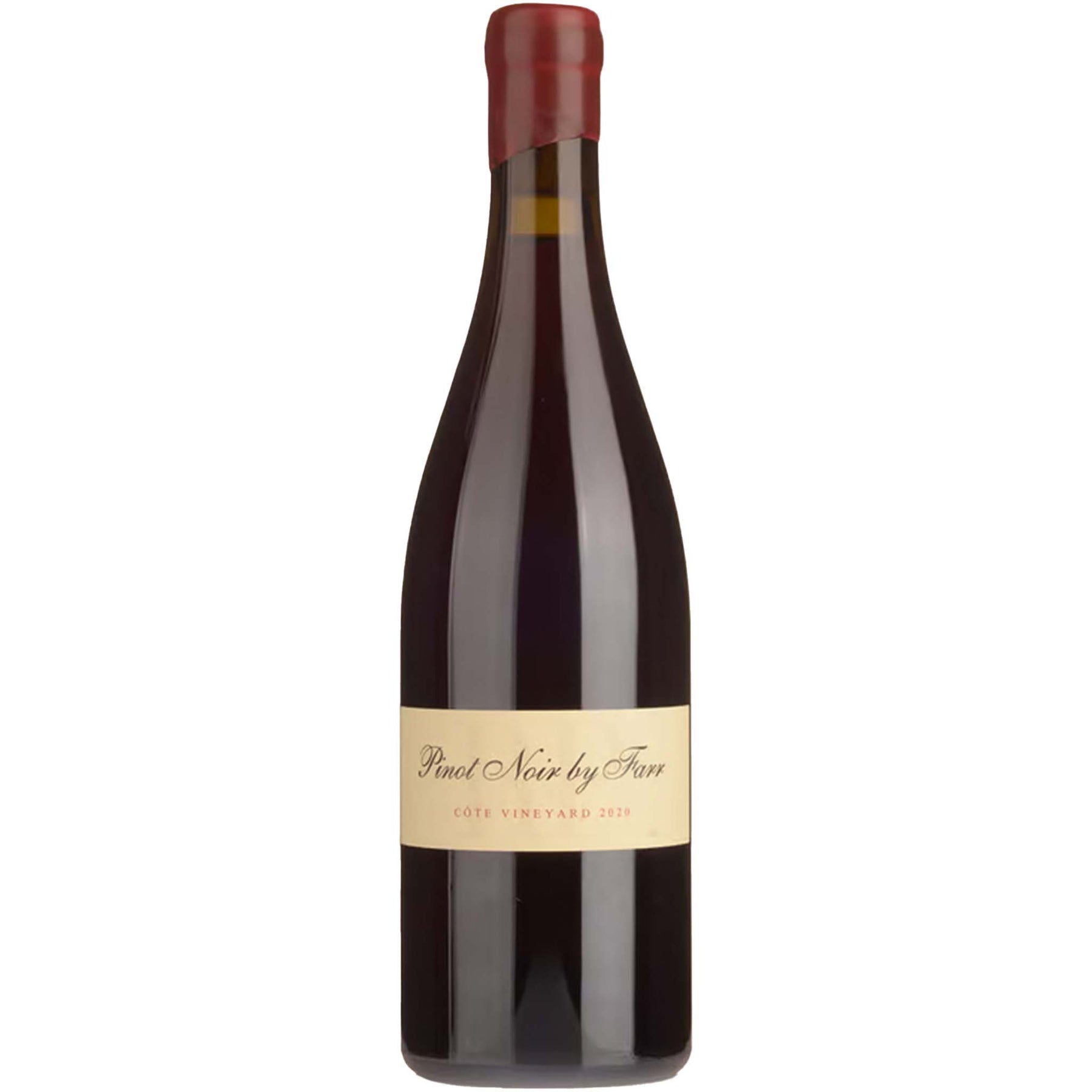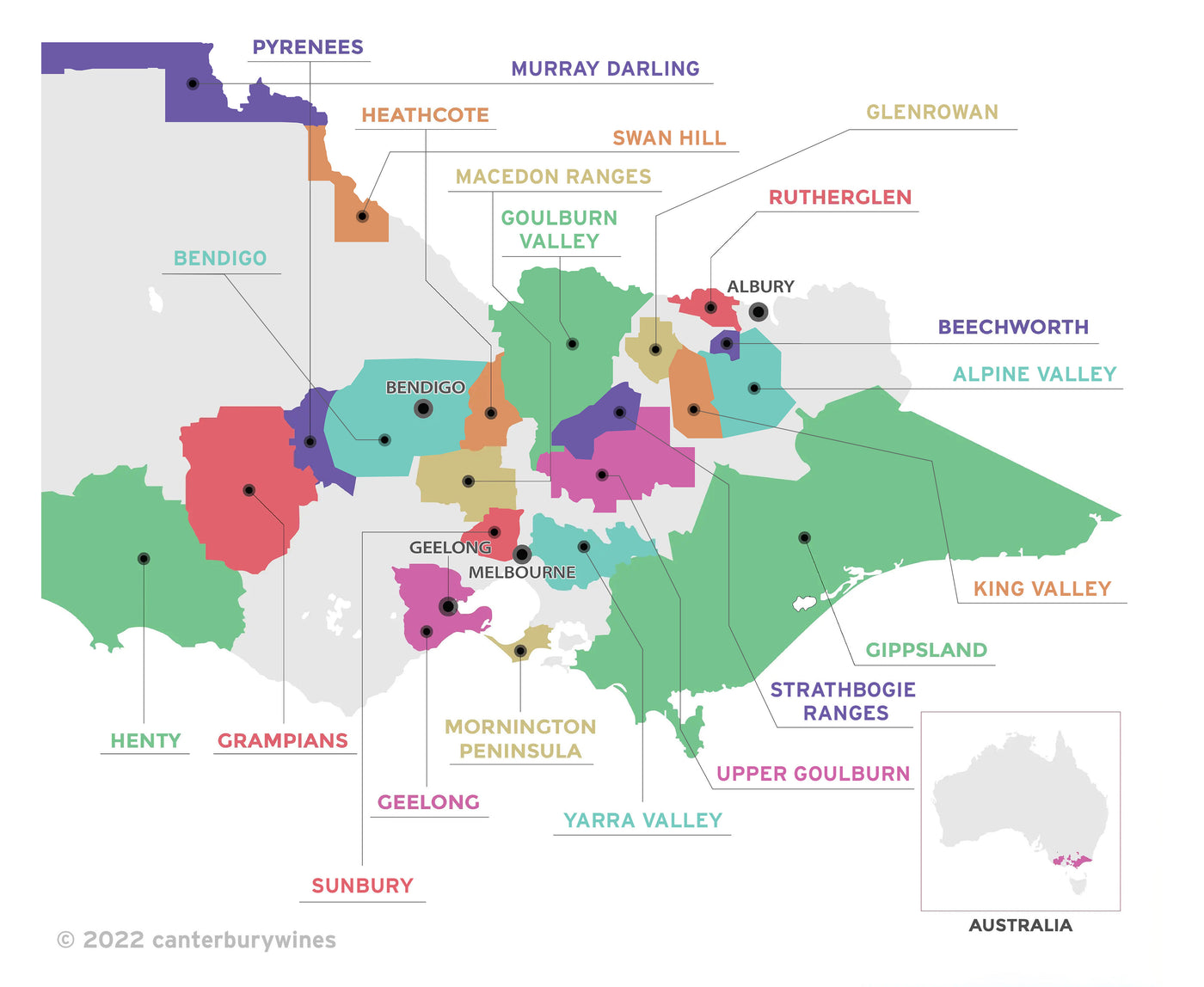

By Farr RP Côte Vineyard Pinot Noir 2020
Style: Red Wine
Closure: Cork
By Farr RP Côte Vineyard Pinot Noir 2020
Warehouse
34 Redland Drive
Vermont VIC 3133
Australia
Critic Score: 97
Alcohol: 13.5%
Size: 750 ml
Drink by: 2033
By Farr produces four single vineyard Pinot Noirs - Farrside, Sangreal, Tout Près and Côte Vineyard. The RP Côte Vineyard Pinot Noir is sourced from close-planted vines on the Côte Vineyard, an exposed côte with hillsides facing north, northeast and east. The wine is named after Robyn Pamela Farr, Gary's wife, who has been a major driving force behind the scenes for over 40 years.
"Medium-deep red with a good purple tint and a mossy, forest-floor/earthy undergrowth and smoked smallgoods bouquet, the palate refreshingly lively with clean acidity underlying the complex, savoury, medium-bodied flavour. Mixed spices, taut and tense, direct and piercing in its lengthy finale, which concludes with a pleasant touch of chewiness. Superb pinot." Huon Hooke
"This wine is pretty and so very perfumed. The cote sites simply produce amazing smoothness and calmness that stretches the length of the palate as with the GC. Abundance of fruit leading to fine and detailed tannin structure. We have been playing with the fruit from these vineyards for more than 8 years, fine tuning the style of wine that these vineyards are producing.
The Côte vineyards consist of the most suitable clones, rootstocks, trellising and management you will find for our landscape. This is our tribute to what 'Gazza' has achieved over 40 years for chardonnay and pinot noir in our region and Australia.
The north côte is a red to brown loam with buckshot stones across the surface. The most exposed of the three votes, but is harvested last of all because of the large amount of clay, which holds valuable moisture for a longer time than the other slopes.
The northeast côte is a continuation of buckshot until the soil becomes black and lined with limestone moving towards the bottom of the rows and a depression that divides limestone from sandstone. At the highest point of the vineyard you will find small amounts of sandstone in the grey sandy loam.
The east côte is divided through the center of the slope by a rise. Black volcanic soil with fragmented limestone in one direction and grey loam with buckshot stones in the other direction. Soil is King as the East cote has the least amount of clay and therefore water holding capacity, resulting in it being harvested first even though it is the coolest côte of the three." By Farr

Huon Hooke and Nick Farr discuss By Farr: Australian Winery of the Year 2022
Expert reviews
"Medium-deep red with a good purple tint and a mossy, forest-floor/earthy undergrowth and smoked smallgoods bouquet, the palate refreshingly lively with clean acidity underlying the complex, savoury, medium-bodied flavour. Mixed spices, taut and tense, direct and piercing in its lengthy finale, which concludes with a pleasant touch of chewiness. Superb pinot. Drink 2023–2032." Huon Hooke, The Real Review - 97 points
About the winery

The Farr estate is located in the Moorabool Valley between Geelong and Ballarat, 100km southwest of Melbourne. Grape growing in this region dates back more than 200 years, with Swiss settlers planting Victoria's first vineyards here in the early 1800s. The rich volcanic soil and continental climate at the estate produce premium fruit with a flavour, bouquet and colour that is unique to our surrounding area.
Gary and Robyn Farr purchased the original property in 1994 and the second section in 1998—this latter had been untouched for almost 40 years and consisted of dense boxthorn and noxious weeds. The final piece of the puzzle, which links the two blocks of land, was purchased by their son Nick in 2011, making a total of 130 acres—of which 36 acres are under vine and the remainder is maintained as grazing and cropping for cattle and horses. With a mixture of different clones and rootstocks, the grape varieties grown here are viognier, chardonnay, pinot noir, gamay and shiraz.
Notoriously brusque but hugely admired and loved, Gary Farr has been making wine in the Moorabool Valley, Bannockburn since 1978. While the landscape has undergone many changes in the past decades, Gary's approach to wine has not and it is this fastidious attention to detail that has inspired a whole generation of vignerons. His experience as a hands-on winemaker was shaped by time spent at Domain Dujac in Burgundy, Cristom in Oregon and Calera in California. Gary developed an appreciation for the beauty of shiraz and viognier from his many journeys to France's Rhone Valley, where he also learned techniques for incorporating these wonderful varieties into his winemaking.
The baton has now been passed on to Nick to carry on the Farr legacy. Nick Farr readily acknowledges the influence of his father in his winemaking and viticultural practices—however, these have been significantly enhanced by his own vast experience. While he was growing up, Nick often worked alongside his father on the family estate before a stint at Rosemount in the Hunter Valley in the late 90s. This was followed by more vintages with Gary as well as at Innisfail Vineyards in the Bannockburn area, where Nick commenced his label Farr Rising. Like his father, Nick has experience at international vineyards, including Cristom in Oregon, Au Bon Climate in California, and Domain Dujac in Burgundy. The reins may have been handed over to the next generation, but Gary, who produced what legendary wine connoisseur Len Evans called 'Australia's best pinot', still keeps a watchful eye over proceedings to ensure the wine continues to meet his high standards.
"The wines we make are not mainstream—they are expressions of our vineyard, our land and what we like to drink. That is what we promise to deliver." Nick Farr
Climate and soils
"The microclimate of the Moorabool Valley is influenced by winds from the western plains and bracing sea breezes, which regulate the temperature on long, sunny days and cool the air overnight. This climate is key to producing naturally balanced, low-yield fruit that is rich in flavour.
The region's environment is both cool and harsh for viticulture, due to the low rainfall and ever-prevailing winds that sweep across the barren western plains of Victoria. On average we receive 240mm of the 540mm annual rainfall in the growing season. The variation of temperatures between night and day helps us achieve complex and long-palate structures in our wines. Farming our land is not easy, but we believe the best wines are born from the most challenging environments.
Our vineyards are based on ancient river deposits within the Moorabool Valley. Thousands of years later, we are reaping the rewards of these complex and mineral-rich soils, which lend their unique characteristics to our grapes.
There are six different soils spread across the Farr property, with the two main types being rich, friable red and black volcanic loam, and limestone, which dominates the loam in some areas. The other soils are quartz gravel through red volcanic soil, ironstone (called buckshot) in grey sandy loam with a heavy clay base, sandstone base, and volcanic lava rock. The soil's good drainage and low fertility are crucial in ensuring small yields of intensely flavoured fruit.
The soil structure and microclimate at our vineyard make it ideal for growing pinot noir and chardonnay, and our location rates among the world's best for both varieties." By Farr

Victoria
Victoria is home to more than 800 wineries across 21 wine regions. The regions are Alpine Valley, Beechworth, Bendigo, Geelong, Gippsland, Glenrowan, Goulburn Valley, Grampians, Heathcote, Henty, King Valley, Macedon Ranges, Mornington Peninsula, Murray Darling, Pyrenees, Rutherglen, Strathbogie Ranges, Sunbury, Swan Hill, Upper Goulburn and Yarra Valley.
Victoria's first vines were planted at Yering in the Yarra Valley in 1838. By 1868 over 3,000 acres had been planted in Victoria, establishing Victoria as the premier wine State of the day. Today, the original vineyards planted at Best's Wines are among the oldest and rarest pre-phylloxera plantings in the world.
Victoria's climate varies from hot and dry in the north to cool in the south and each wine region specialises in different varietals. For example, Rutherglen in the north is famous for its opulent Muscats and Topaque and bold reds, while the many cooler climate regions near Melbourne produce world class Chardonnay and pinot Noir. Victoria is truly a wine lover's playground.

